¶ Package Editor Basics
This page serves as a basic guide to Package Editor, which is the main general purpose tool for modding in Legendary Explorer. Package Editor can open game package files (ending with .pcc, .sfm, .u, and .upk) from OT and LE.
¶ Main Window
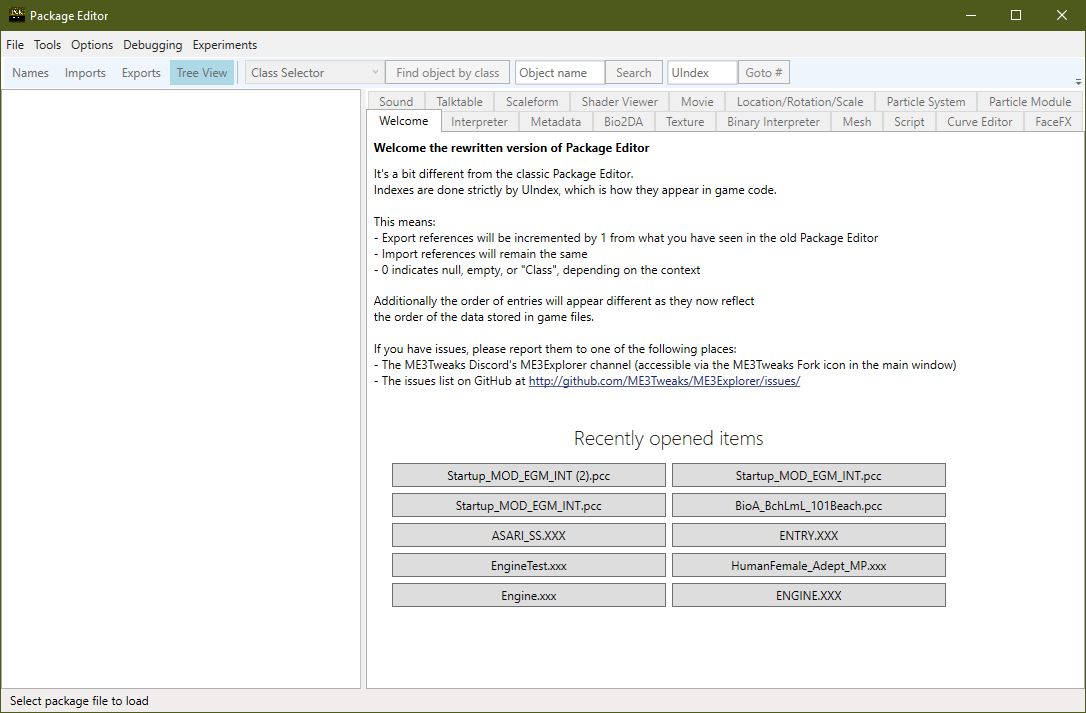
Package files in Mass Effect games (and Unreal Engine 3 games) have 3 main entries in them: Names, Imports, and Exports. Each category of item is defined in their own metadata table, however the indexing system for Imports and Exports is shared, as these are both a type of 'entry' in the file.
-
Imports start at -1 and decrement for every new entry (-1, -2, -3 ...) -
Exports start at 1 and increment for every new entry (1, 2, 3...) -
The 0 indexed item is used for NULL
LEX has individual views for all three of these items, as well as a combined view for the logical hierarchy of package files, called Tree View.
¶ Names
Names account for nearly every string in a file (though there are exceptions to this) - from object names, property names and values, and other things. You can find the list of names that are in the package's Name Table in the Names view.
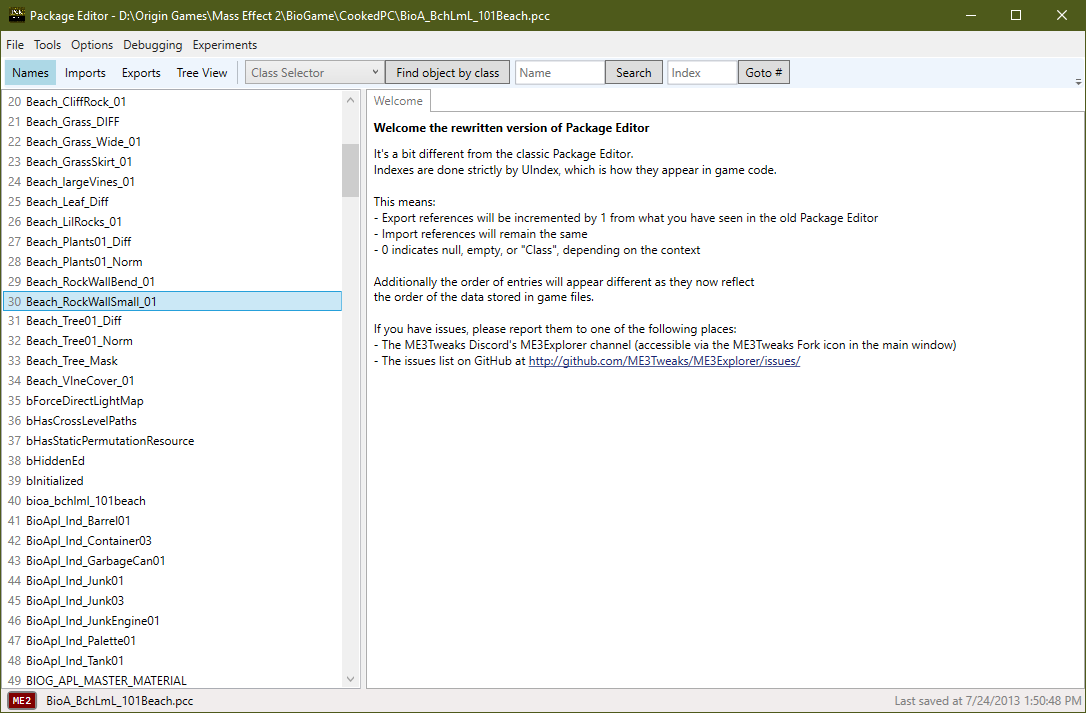
You can right click a name to perform operations on the name, or the name table itself.
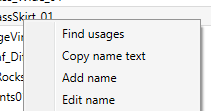
¶ Imports
Imports are references to Exports that are loaded from another file. You cannot specify which file they will come from, as the game will simply reference the one in memory. Imports almost always point to higher 'tier' files (such as the master BioD or level BioP, or the startup files such as SFXGame or Engine). If an import is not in memory and it is referenced the game will crash.
You can view imports in the Imports tab.
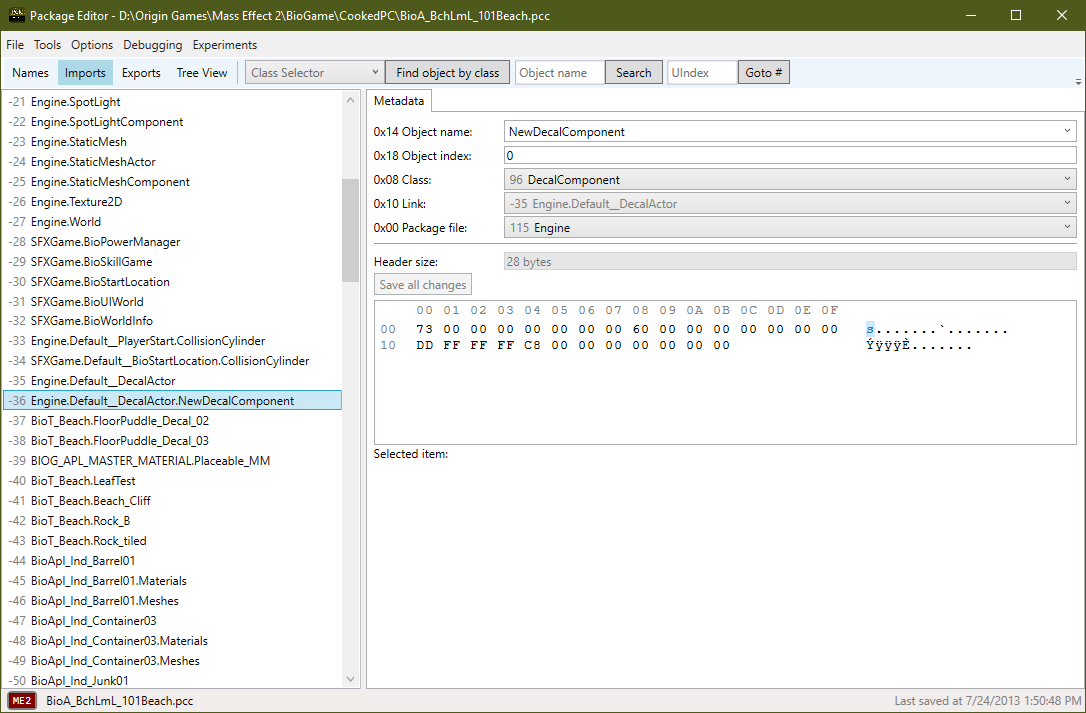
Note that Unreal Engine will remove unreferenced objects from memory. If you change a reference in a BioP file for example, the reference to the original items may be lost. An example of this would be changing what weapon an enemy has - the original weapon may become unreferenced. If a subfile uses an import on this lost reference, it may no longer reside in memory. You can force a reference in the binary of TheWorld by adding it to ExtraReferencedObjects.
¶ Exports
Exports define the actual data stored in the file and are what you will spend a majority of your time editing. Exports are singular objects that are logically sorted by their link to their parent object. You can view exports in the Export view.
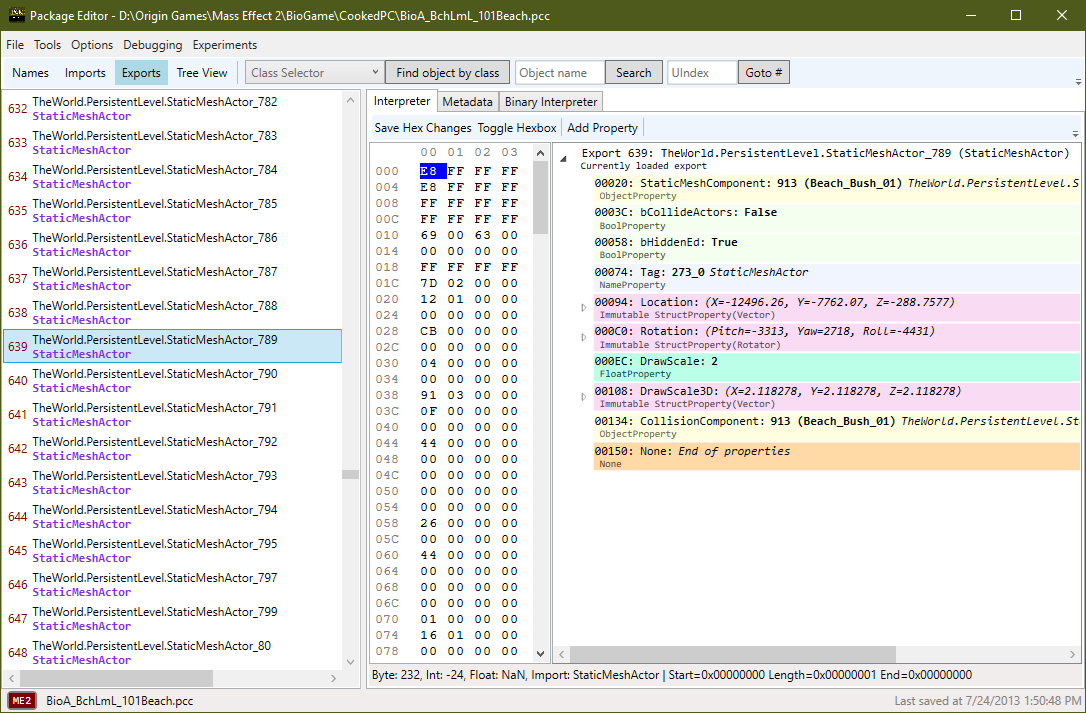
When you click on an export, many tabs will appear on the right side pane. These will allow you to edit different features of that export, including properties (if the object has any), the metadata for the export (which is part of the export metadata table and contains things like object name, export data size, etc), as well as object specific editors, such as textures, audio, and binary (post-properties data).
¶ Tree View
Tree View is the combined Imports + Exports view that organizes objects by their links (which define an entry's parent). You will spend the majority of your time in Package Editor in Tree View, as this view is where most of the development of the toolset has been done.
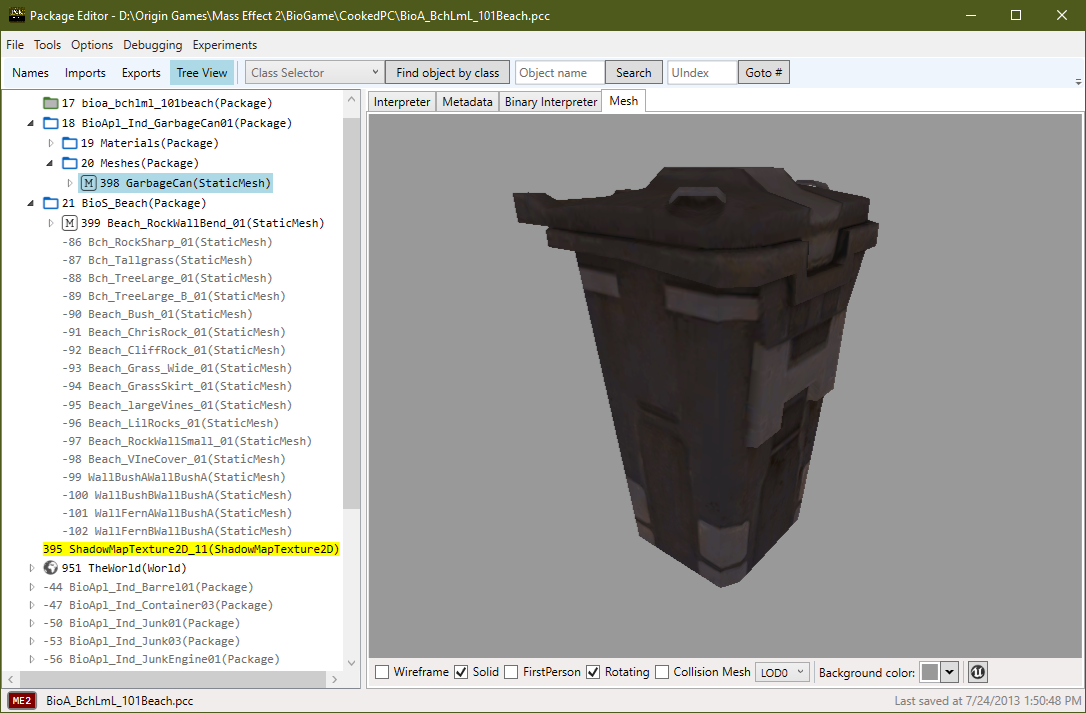
Tree View supports dragging and dropping between Package Editor Tree View - so if you want to copy and object from one package to another, you can drag it from one tree view to one in another Package Editor instance.
Items highlighted in yellow are items that have been modified but have not yet been saved.